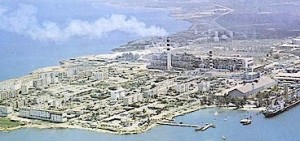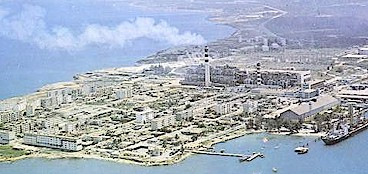
CUBA STANDARD — The Russian government will provide Cuba a loan for the reconstruction and expansion of two thermoelectric power plants.
The €1.2 billion ($1.36 billion) loan, provided as export guarantee for Russian supplies, cover construction of one 200 mw generator at the Máximo Gómez power plant in Mariel, and three 200 mw generators at the Habana Este power plant in Santa Cruz del Norte. Both power plants will continue to use domestically produced heavy oil.
This is the biggest single loan for Cuba since the early 1990s.
The agreement for the power plant loan, which will be handled by foreign trade bank VEB, was signed in Moscow by Finance Minister Anton Siluanov and Vice President Ricardo Cabrisas, after a meeting of the Russian-Cuban commission on economic and scientific-technical cooperation. An additional agreement stipulates that Cuba pay the amount of savings from lower fuel use of the new technology back to Russia, according to TASS.
Cabrisas and Siluanov also signed an agreement for Russia to provide a $100 million state export credit to finance the modernization and expansion of the Antillana de Acero steel plant in Havana. Belonging to the Acinox state enterprise, the 56 year-old plant in the Cotorro suburb produces 200,000 tons of steel per year.
Finally, Russia’s Pharmeco agreed with Havana-based Heber Biotec to import Cuban pharmaceuticals including Heberprot-P.
Vice President Dmitri Rogozin pointed out that the loans are coming amid Russia’s difficulties to access financial markets, and hailed them as the biggest capital injection into the Cuban economy in the past two decades.
The immediate corporate beneficiary of the power plant loan is Russia’s RAO UES Group. Five years ago, the power generation and trading company said it would open offices in Havana, as a first step towards setting up a joint venture in Cuba. In 2009, company CEO Yevgeny Dod signed a memorandum of understanding with state utility Unión Eléctrica to form Generación Mariel S.A., a 50-50 joint venture.
The joint venture’s first project was to be the modernization and expansion of the Máximo Gómez thermoelectric plant in Mariel, a 40-year old facility that has been working at less than 60% capacity. The 600-mw, fuel-oil powered plant — built in the 1970s with Soviet technology — runs with four 100-mw generators.
Former Deputy Prime Minister Igor Sechin, who visited Cuba at least four times, is chairman of Inter RAO. State nuclear power utilities Rosatom and Rosenergoatom control 57.3% of Inter RAO shares.
Last year, the Russian parliament ratified a write-off of $35 billion of Cuba’s $38.5 billion debt with the defunct Soviet Union. Russia agreed to let Cuba spend the remaining $3.5 billion of the Soviet debt “on significant investment projects, which Russia is going to select and negotiate together with the Cuban side,” President Vladimir Putin said last year during a visit to Cuba. Cuba agreed to pay the $3.5 billion over 10 years in equal installments every six months.

